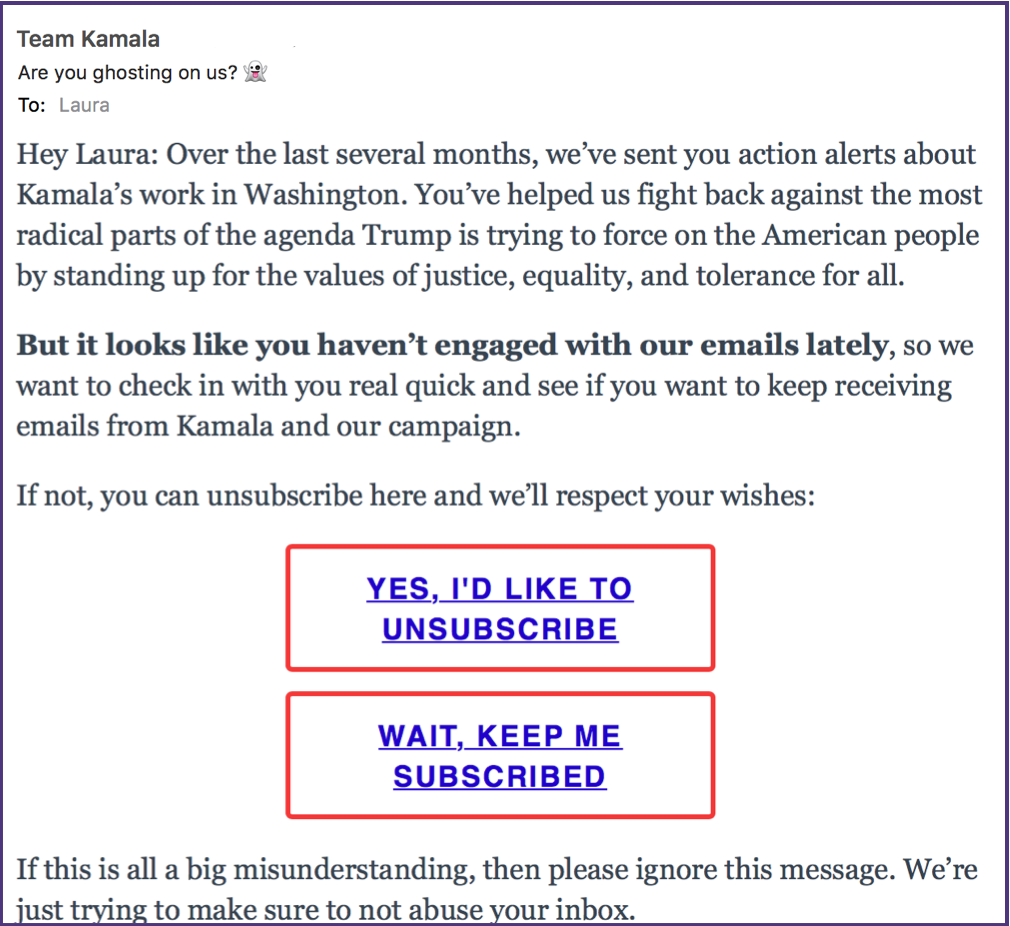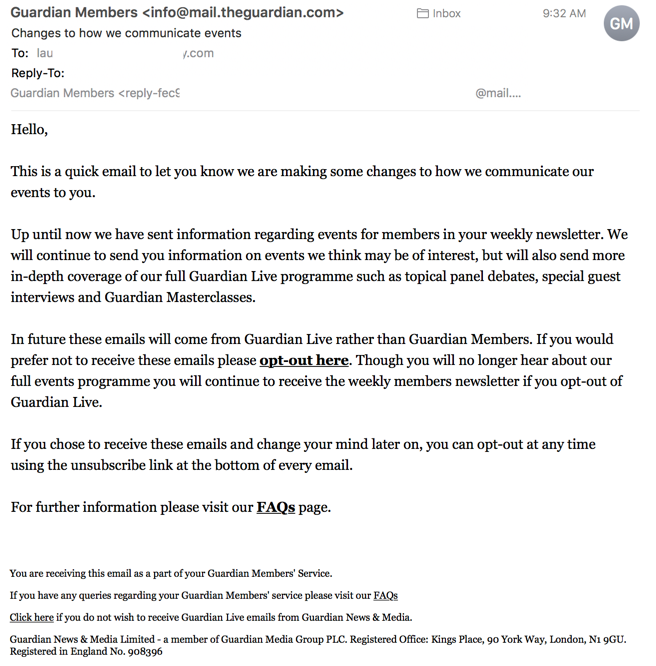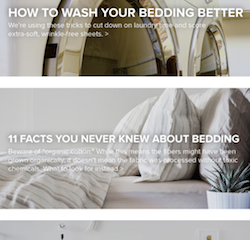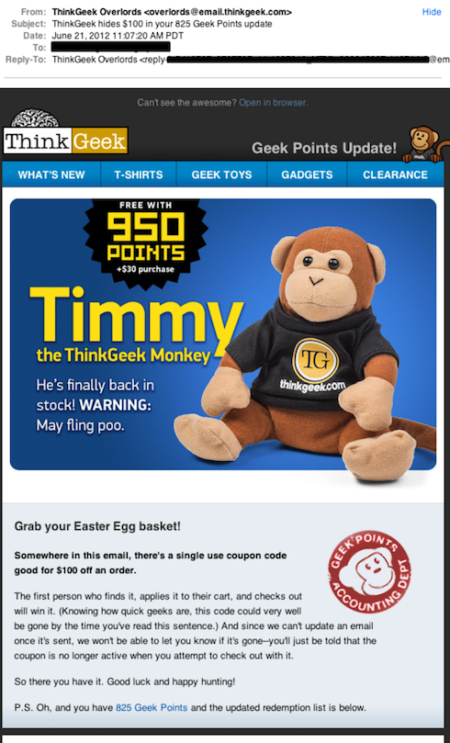Good Emails in the Wild
Reengagement emails
By default I don’t load images in email. For one thing it lets me see who is using open / click data to measure engagement. This morning I got a reengagement email from my Senator. 
There are things I really like about this email and there are somethings I think they get a little wrong.
Subscription transparency
I regularly tell clients to be transparent with their sends. With email, permission is better than forgiveness. A surprise change in mail frequency or type leads to complaints. Complaints lead to bulk foldering. Once mail is in the bulk folder, it’s hard to get out of there, particularly at some webmail providers.
The permission is better than forgiveness is hard for a lot of senders to understand. Much of marketing is about assuming the yes in the absence of a no. Sure, they’ll back off when there’s a no, in DMA terms it’s the “one bite at the apple rule.” Unfortunately for senders the one bite rule doesn’t work in the email space.
There are a couple reasons that permission is better than forgiveness in the email space. The biggest is that the ISPs own the mailbox and as the owners they make decisions about who gets access. They prioritize the wants and needs of their customers / users over the wants and needs of advertisers. It’s easy for users to give feedback; in many cases they just have to hit a button. But that’s another whole blog post.
Today I get an email from The Guardian. They’re modifying and expanding their newsletter program, so they sent subscribers an update about it.
Content marketing
 There are a lot of mailing lists I’m on simply because I can’t be bothered to unsubscribe. Every week or every few days mail shows up in my inbox. I may look at the subject line, I may even open the message. But most of it is not interesting. It’s yet another sale at Sur La Table. It’s another promo from Macheist. Virgin America wants me to book a flight. All of these messages are useful and all, particularly if I’m trying to book a flight or looking to replace the dish I broke last week. But many of these companies send content that’s so close to the same, it’s not worth a whole lot of my attention.
There are a lot of mailing lists I’m on simply because I can’t be bothered to unsubscribe. Every week or every few days mail shows up in my inbox. I may look at the subject line, I may even open the message. But most of it is not interesting. It’s yet another sale at Sur La Table. It’s another promo from Macheist. Virgin America wants me to book a flight. All of these messages are useful and all, particularly if I’m trying to book a flight or looking to replace the dish I broke last week. But many of these companies send content that’s so close to the same, it’s not worth a whole lot of my attention.
I don’t think I’m that unusual in this respect. People are used to getting offers and so they know they can sit back and wait until they’re ready to shop and they’re ready to buy.
This is why content marketing can be such a win. It’s different, it’s new. It’s worth my time to dig into the email and read it. We recently bought some sheets from a company and they added me to their mailing list. Every week now, I get an email with lovely pictures of relaxing bedrooms and articles on how best to sleep and wash my sheets and replace my pillow cases.
From a consumer perspective, it makes me want to have a showroom bedroom with lots of comfy linens. From a marketing perspective I appreciate the hard work and dedication that goes into generating both the lovely pictures and the useful content. But I wonder if the effort put into the content generation provides a decent return on investment.
How to make sure your mail is read
ThinkGeek have a bit of a challenging audience to connect with. Many of their customers are, well, geeks. And many geeks have a reputation for being suspicious of marketing. I’d even go so far as to say that ThinkGeek has a bigger marketing challenge than other popular retailers.
One of the challenges all marketers face, though, is getting people to actually open and read an email carefully. ThinkGeek have addressed this challenge by turning reading email into a competitive game.
In June they sent out an email with a hidden coupon code in it. The first person to redeem the code received $100 off their order. What a creative way to get people to actually look through an email and make a purchase.
This, of course, is not a new marketing technique. I have at least 2 different Sigma t-shirts using the same style of marketing. This was in the dark ages and we didn’t have online forms, but the new catalog came with a postcard of questions to answer and return and the first 100 post cards got t-shirts. It was actually kinda nifty. As head tech, I got catalogs all the time. But answering the questions got me to look through the Sigma catalog and see their new products. Plus! T-shirt!
What new an interesting ways have you seen marketers use to engage recipients?
Well designed email program
I so often talk about the failures of various email marketing programs that it’s only fair I mention when someone gets it right.
We spent the past week with family on the east coast. Our flight back to the west coast was very, very early Sunday morning so I booked a night at the airport hotel. That way we could just stumble to the shuttle at some horrible hour and not worry about trying to coordinate drivers and cars and all that other stuff.
As we were headed to the airport, I pulled out my phone to confirm directions. I found a new message in my mailbox offering me the opportunity to check-in online. I decided to see how it worked.
Smart email
This week I received an email from a vendor we purchased software from 6 months ago. And it was exactly 6 months to the day of our original purchase I received an email basically reminding me of what I purchased and asking me to update my contact information.
Read MoreWalking the Walk
Last week I mentioned a Smith-Harmon report about how to handle email when going out of business. I mentioned at the end of the post that I was pleasantly surprised at how well done their email program was. Let’s walk through the process.
1) The download process. Clicking on the “download report” page popped up a signup window. They ask for first name, last name, company and and email address, but only require an email address. There is a link to their privacy policy and two unchecked boxes. The first is “I would like to subscribe to Smith-Harmon’s monthly newsletter, which is full of email marketing tips, news and research.” The second is “Please have a representative contact me to discuss how Smith-Harmon can help my company with its email program.”
How does their process incorporate best practices?